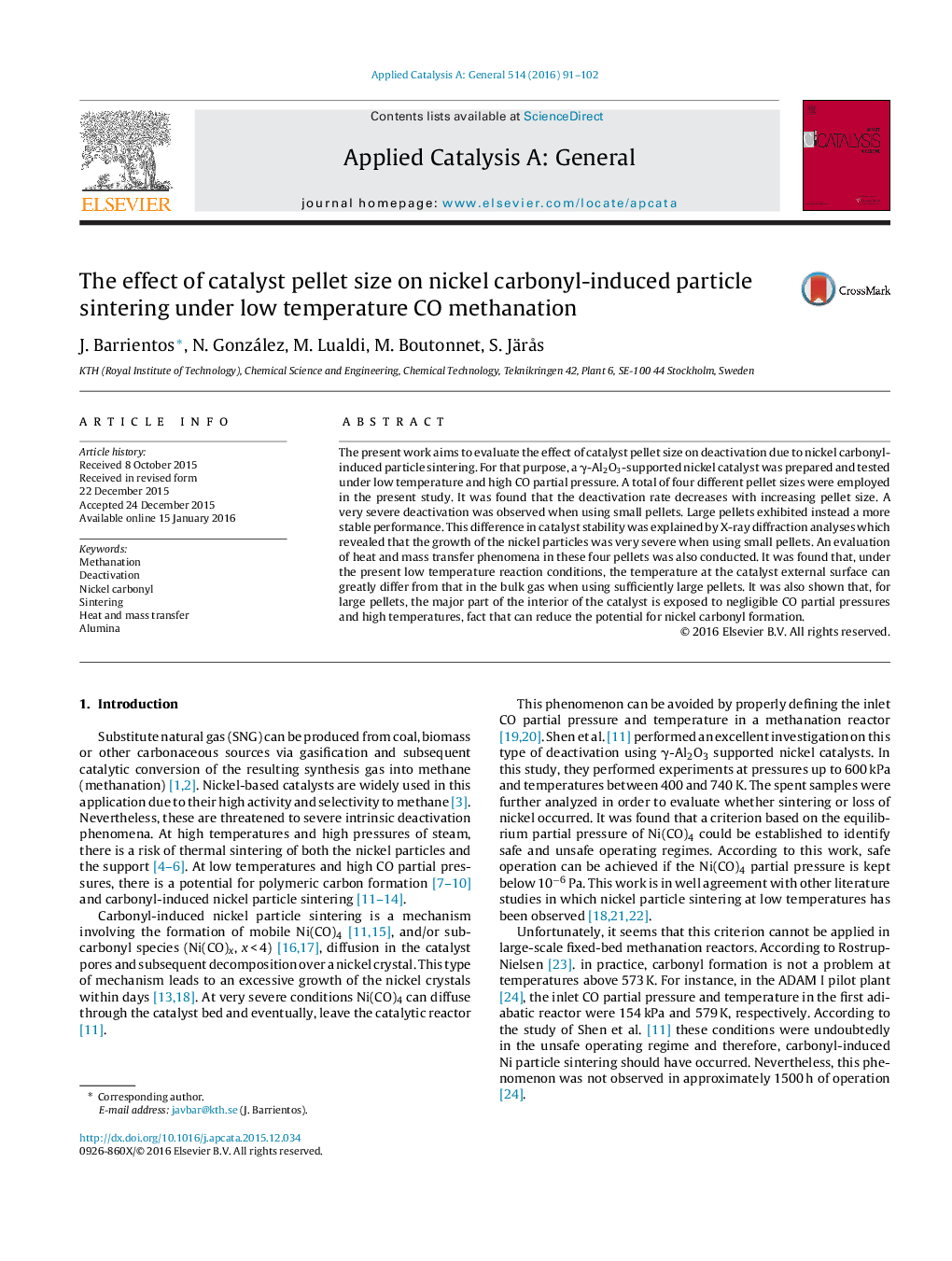| Article ID | Journal | Published Year | Pages | File Type |
|---|---|---|---|---|
| 38945 | Applied Catalysis A: General | 2016 | 12 Pages |
•A methanation nickel catalyst was tested using different pellet sizes.•The pellets were tested at low temperature and high CO partial pressure.•Sintering was very severe when using small catalyst pellets.•Sintering was insignificant when using large catalyst pellets.•Carbonyl-induced sintering can be reduced when the reaction is mass transfer limited.
The present work aims to evaluate the effect of catalyst pellet size on deactivation due to nickel carbonyl-induced particle sintering. For that purpose, a γ-Al2O3-supported nickel catalyst was prepared and tested under low temperature and high CO partial pressure. A total of four different pellet sizes were employed in the present study. It was found that the deactivation rate decreases with increasing pellet size. A very severe deactivation was observed when using small pellets. Large pellets exhibited instead a more stable performance. This difference in catalyst stability was explained by X-ray diffraction analyses which revealed that the growth of the nickel particles was very severe when using small pellets. An evaluation of heat and mass transfer phenomena in these four pellets was also conducted. It was found that, under the present low temperature reaction conditions, the temperature at the catalyst external surface can greatly differ from that in the bulk gas when using sufficiently large pellets. It was also shown that, for large pellets, the major part of the interior of the catalyst is exposed to negligible CO partial pressures and high temperatures, fact that can reduce the potential for nickel carbonyl formation.
Graphical abstractFigure optionsDownload full-size imageDownload high-quality image (107 K)Download as PowerPoint slide
